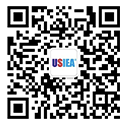Research on Study Abroad Programs
Research on Study Abroad Programs
USIEA is committed to providing access to study abroad opportunities to every Chinese teacher and student. In addition to providing access, one of our key functions is to conduct research on international education, particularly in the area of study abroad as it relates to student exchange programs.
Scope of International Education Research
China has recently experienced rapid development of international education exchange programs and cooperation between universities in China and abroad. As a result, Chinese students have access to a greater variety of international programs than ever before; hence the need for greater research in this area. Nevertheless, there is a lack of research being done on this topic. USIEA has begun gathering data focused on government policy and trends in international education in higher education in China. The goal of the data collection is to identify factors leading to success when designing and establishing joint programs. This information will help both Chinese and foreign educational partners understand how to create an optimal international program.
The sample research below is based on USIEA’s network of over 110 universities in China and tens of thousands of students who have engaged in a study abroad experience. The scope of international education research conducted by USIEA included the following criteria:
● Self-financed direct enroll programs (not bilateral exchange programs): Students were required to pay tuition to overseas universities; the sample included students who received aid in the form of home school scholarships or government scholarships;
● Short-term exchange programs: Students studied at overseas partner universities for one quarter, one semester or one academic year. Programs ranged from three to eight months in duration. Programs that did not fall into the primary research criteria, such as programs for two weeks or more than one year, were excluded from this sample;
● Student visa: Regardless of whether students studied in a pure language program or university credit program, students were granted a student visa. Students who received a traveler or visitor visa were excluded from the sample;
● Geographic area: Research was focused on Chinese students enrolled in Chinese universities who participated in a study abroad or English language program at accredited institutions in the United States.
Key Research Topics
● University perspective: Understanding the current status, overall environment and infrastructure of the globalization of higher education with an emphasis on international education policy and implementation;
● Student perspective: Comparative research on the impact or change that a study abroad experience has had on students in terms of cultural sensitivity, study skills, and other benefits;
● Project perspective: Advantages and disadvantages of different programs, cost effectiveness, areas of improvement, and dissimilarities caused by various intervention tools.
This research has limitations, as it is based exclusively on USIEA’s partner schools and programs. However, we believe the data presented is valuable to help understand the landscape of the Chinese study abroad market. We hope these research findings can help our partner universities to better understand the student experience while on study abroad programs, and that our research efforts contribute to the globalization of higher education in China. We welcome the opportunity to collaborate with other institutions, organizations or individual scholars who are interested in the same areas.








